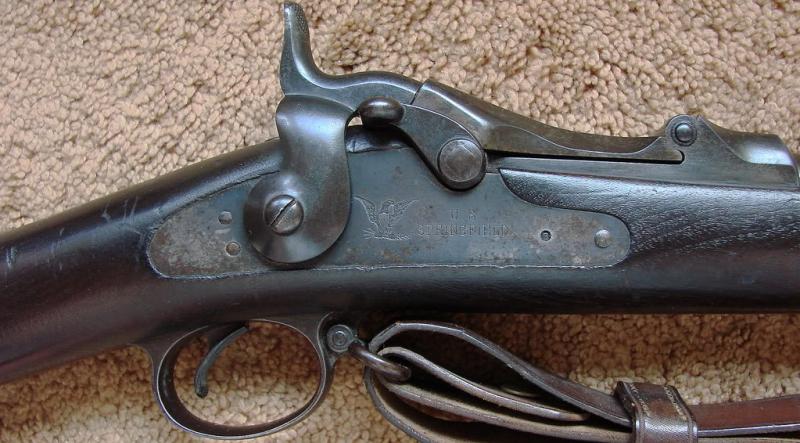

- 1873 SPRINGFIELD TRAPDOOR SLING INSTALLATION CRACKED
- 1873 SPRINGFIELD TRAPDOOR SLING INSTALLATION SERIAL
- 1873 SPRINGFIELD TRAPDOOR SLING INSTALLATION FULL
With a 24" barrel, it was a little too long for a saddle carbine. Custer had complained to the armory about the new Springfield's length. The Springfield 45-70s were issued in 1874, so the soldiers had about two years of experience with them before the battle. The rifles not assigned to the troups apparently were cached by Reno and Custer prior to the battle. The 500 model 1873 Springfield carbines assigned to the 7th Cavalry were of a new design. According to some experts, none of the weapons have turned up in collections. They were taken to a place known only to the Indians and buried or cached. The rifles, sabers, pistols, and other items of war were collected. I do not know if the family ever reopened the museum, or what happened to the items that were in the collection.Īfter the battle, the soldiers possessions were taken. The museum items were put in storage and the building was leased out to a Mexican restaurant.
1873 SPRINGFIELD TRAPDOOR SLING INSTALLATION FULL
Mrs Proctor was wheelchair bound at the time and required full time care.
1873 SPRINGFIELD TRAPDOOR SLING INSTALLATION SERIAL
One day at the museum, a visitor told Gil that Pete Kitchen's rifle was one that was issued to Custer's men, according to serial number.Īfter Gil passed away, his son came from California to handle the estate.
1873 SPRINGFIELD TRAPDOOR SLING INSTALLATION CRACKED
On one battle, according to the story, he clubbed an Apache over the head with the rifle, and cracked the stock. Pete Kitchen made good use of that rifle during his battles with the Apaches. The soldier had deserted and was on his way to Mexico. The soldier was greatfull and gave Pete his rifle. Gil tells this tale in his book, "The Trails of Pete Kitchen." The soldier was in bad shape when he arrived at the ranch, and Pete gave him hospitality. Army soldier that was in the Battle of the Little Big Horn. Among the items on display was a rifle given to Pete Kitchen by a U.S. Gil had a building built out on the highway and started a small museum. Gil Proctor, who passed away in the early 1970s, purchased and was living at the historic Pete Kitchen Ranch just North of Nogales, AZ. It is most likely that the men ran out of ammunition. The troops were using a more powerful and accurate weapon, but they were grossly outnumbered by Indians with repeating Winchesters. The average soldier carried from 15 to 24 rounds on his person. It has been suggested that the monument contained information on the location of the burial site of the weapons collected from the dead soldiers by the Indians. The word must have leaked out because the monument was vandalized and the contents were removed by person/persons unknown. They reinstalled the sign with the intention of waiting till the 100th Anniversary of the battle. The Park Service decided not to disturb the contents, some of which appeared to be small items collected off the bodies of the soldiers.

The inside of the monument was hollow, and was construced as a time capsule. In the late 1940's the National Park Service decided to clean up the monument. The monument was constructed with stone and concrete and had a bronze sign on the side. He paid to have a monument erected to commemorate the battle. He homesteaded some land near the battlefield. There is a story about a trapper that married an Apache woman. When I visited the battlefield museum in 1997, I asked the curator if any of Custer's carbines were on display. The subsequent carbines manufactured after the first 500 had the barrels shortened to 22", and also had some other minor changes. Battle of the Little Big Horn - Custer's RiflesĪfter the battle, the soldiers possessions were taken.


 0 kommentar(er)
0 kommentar(er)
